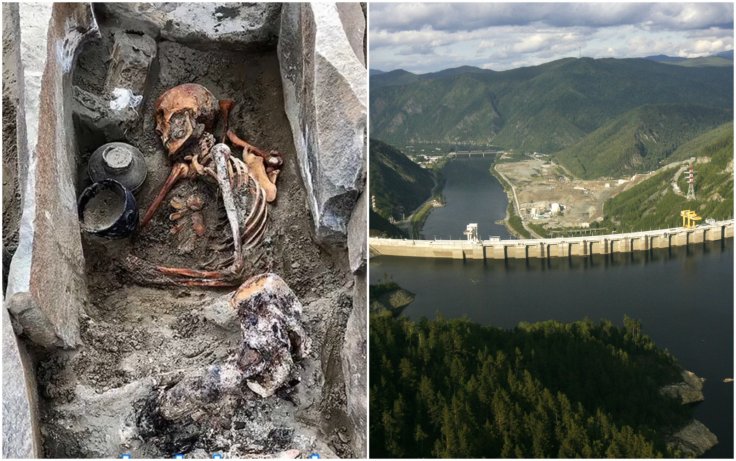
A group of archaeologists have found a well-preserved mummy, which is possibly a 'Hun woman', from the shore of the giant reservoir on the Yenisei River upstream of Sayano-Shushenskaya dam, in Russia's Khakassia, near Sayanogorsk this week. Further research made scientists believe that the woman was buried around 1,900 to 2,000-years-ago.
The Serbian Times reported that the buried woman was found in mummified condition and she was dressed in a silk skirt with a funeral meal. The researchers also saw that a pouch of pine nuts was buried along with the woman and it was placed on her chest.
Dr Solovieva, the co-researcher said they found a Chinese mirror along with a make-up box covered with birch-bark inside the unknown woman's grave, specifically near the head of the mummy. She also said that they saw two vessels, containing funeral meal inside and one of them looked like a Hun-style vase.
Huns, the nomadic people used to live in Central Asia, the Caucasus and Eastern Europe during 4th to 6th century AD.
This discovery was done by the archaeological team from St Petersburg's Institute of History of Material Culture (Russian Academy of Sciences). While working on the shoreline in southern Siberia's Tuva or Tyva Republic, the researchers noticed a rectangle shaped stone construction, which looked like a burial ground.
One of the scientists, involved in the research said that when they discovered the mummy, which is probably 2000-years-old, they found that it was in good condition with soft tissues and skin. The researcher also mentioned that her clothing and all the belongings, which were buried along with the woman, was intact.
The deputy director of that Russian institution, Natalya Solovieva said they believe that the mummy was found with silk cloths, "a beaded belt with a jet buckle, apparently with a pattern."
Another archaeologist Dr Marina Kilunovskaya mentioned that the lower part of the mummy was well preserved but "this is not a classic mummy - in this case, the burial was tightly closed with a stone lid, enabling a process of natural mummification."
Researchers mentioned that it was surprising to find a well-preserved mummy in that location as the Sayano–Shushenskaya Dam, the largest power plant in the country and the 9th-largest hydroelectric plant in the world, was in function from 1978 to 1985 and those remains were underwater for a long time.
Reports said that it is an unusual case of mummification inside a stone tomb, as the skin and organs of a dead person were preserved without the introduction of chemicals by humans. This usually happens in specific environments such as extreme cold, arid conditions but in this case, the reason behind the mummification was the lack of oxygen.
The Nation reported that a spokesperson at the St. Petersburg Institute said, "Forecasts of archaeologists are very optimistic. Most likely, soft fabrics, leather and details of clothes have been preserved."
Scientists involved in this unique archaeological finding, have received a grant and support from the Russian Geographical Society. The restoration experts have started their further examination on that historical mummy and it is expected that through more research scientists will come to know about the woman and her background or may be about the era when she was alive.
Read more








